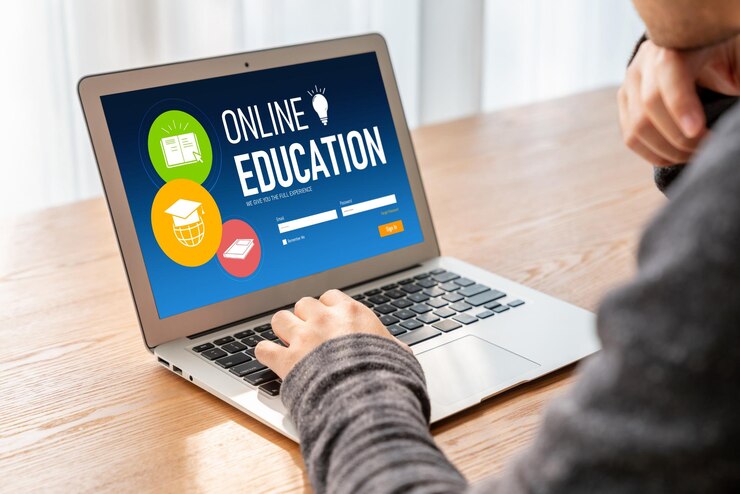The global K-12 education market is estimated to reach $525.7 billion by 2031. If you also belong to this industry, the coming years can prove to be highly lucrative for you. However, that’s only possible if you are equipped with the right tools and resources to capitalize on this anticipated burgeon.
As we step into a digitally powered learning ecosystem, there’s a pressing need for institutions to adapt to this transformation to their maximum capacity. After all, that’s the only promised way to become a part of the upcoming K-12 boom.
But the question is—how can you initiate that? Well, by digitalizing your K12 curriculum!
So read this blog as we discuss the role and importance of digital content in global K-12 education and introduce you to some tools and software that can help you on your way to the overhaul. Let’s start!
What are the Challenges Associated with Standard Curriculums?
Standard curriculums—with printed books, chalkboards, and whiteboards—have always been the norm in K12 education.
However, there are several disadvantages associated with them, which, if not addressed, can have serious repercussions on the advancement of the education system. For instance:
1. Limited Resource Accessibility
As mentioned above, standard curriculums entirely rely on tangible resources like printed books, notes, etc, for imparting education.
However, every student may not have access to them. A recent study revealed that 1 in every 5 children aged five to eight don’t have a book of their own at home! This limited resource accessibility adversely impacts the overall efficiency of education.
2. No Customization Options
Every child approaches learning differently from others. But, traditional K12 curriculums follow a “one-size-fits-all” approach. There isn’t enough scope for personalization in them. As an educator, you cannot customize the curriculum or its content to accommodate a student’s unique learning needs, style, pace, etc. Over time, this rigidity becomes one of the major reasons why students get disengaged from education altogether.
3. Zero Interactivity
Right from shopping to socializing—with technology at its peak, everything around us has become interactive. These days, there’s an element of engagement associated with every single thing that we do online. Students yearn for the same kind of interactivity in education, too. But unfortunately, standard curriculums do not resonate with this need.
4. Adverse Environmental Impact
According to statistics, more than 200 million trees are cut down daily to make paper! Of course, a huge percentage of this goes toward making K12 learning resources. So, in a way, standard curriculums also largely contribute to deforestation and waste generation. This can pose a serious environmental issue in the coming years if not corrected immediately.
Why Shift from Standard Curriculums to Digital Curriculums in K12 Education?
Now that you know about the disadvantages of standard curriculums, let us introduce you to the advantages of digital curriculums and prove how they can emerge as the right substitute for K12 education:
1. Improves Educational Accessibility
Unlike standard curriculums, digital curriculums aren’t difficult to access. There are several Learning Object Repositories (LORs), Open Educational Resources (OERs), and other online platforms where both students and educators can access learning resources for free. This highly amplifies educational accessibility, thereby bolstering its overall efficiency.
2. Builds Modern-Day Skills
In this modern era, merely possessing hard and soft skills is not enough.
For a student to become marketable, they must also be digitally literate and proficient in using online tools, software, platforms, etc. Digital curriculums can help you imbibe this skill into them. Early exposure to the online ecosystem can not only familiarize children with its functioning but also build their cognitive abilities for properly handling and utilizing it.
3. Offers an Edge of Personalization
Every element of educational technology is highly customizable—and digital curriculums are no exception. Unlike traditional ones, they can be easily customized to meet the unique learning needs of every student. This, in turn, tends to generate exceptional learning outcomes—with an average of 8-11% improvement.
4. Enhances Student Engagement
Digital curricula consist of online learning resources like eBooks and digital textbooks. These digital materials are created on platforms like KITABOO, which facilitate the inclusion of interactive elements. This includes multimedia, gamification, simulations, etc. As a result, students find them much more engaging and captivating.
5. Fosters Sustainability
Another reason eLearning for schools is important is that digital curricula do not contribute to deforestation. They are a much more sustainable alternative to standard curricula.
3 Innovative Digital Publishing Platforms to Create Digital Curriculums
Finally, here are three top online tools that can help you create K12 digital resources and embrace digital curriculums for tomorrow:
1. KITABOO
KITABOO is a digital textbook platform that primarily enables the creation of eBooks and other digital resources. As an educator, you can use it to create a digital curriculum for K12 students.
The platform is easy to use and consists of several innovative features, such as multimedia incorporation, multi-device compatibility, LMS integration, etc. Moreover, not just creation—you can also publish your educational eBook through KITABOO.
2. Thinkific
Thinkific is another viable option for creating digital K12 curriculums. You only need to upload your eBooks/digital courses on the platform, and your digital curriculum is ready to be shared with your students. It’s highly customizable, feature-rich, and easy to use.
3. Teachable
Teachable simplifies the creation of digital curriculums. With Teachable, you can build an eBook library and easily share it with your students. Additionally, you can create and upload online courses, providing a comprehensive and cohesive digital curriculum for your K–12 learners.
Wrapping Up
Gone are the days when digital content in global K12 education was hard to find. With digitalization picking up pace, both students and educators are rapidly inclining toward digital curriculum.
So, if you’re an institution, now is the time to add the essence of technology to your educational resources!
In this regard, you can team up with KITABOO. As one of the best digital publishing solutions on the market, KITABOO allows you to easily create and publish eBooks, helping you build your own digital K12 curriculum. Don’t wait—connect with us today!
Also Check:
Digital Textbook Platform for Associations & Societies
Digital Publishing Solution for Content Aggregators
Digital Textbook Platform for Training Companies









